Solution summary
Vs. anaemia is a service that empowers rural women to combat anaemia by bringing about awareness and changes in their daily lifestyle. It consists of a community driven initiative to empower women to battle anaemia through knowledge sharing, and a set of solutions in the form of a kit that aims to instil a consciousness of their diet and supplement intake, and inculcate practices that can help them cope during and post pregnancy.
Need for intervention
Women who are pregnant are at a higher risk for developing anaemia due to the excess amount of blood the body produces to help provide nutrients for the growth of the baby. The challenge lies in the rural segment of India where myths, cultural norms and negligence act as a barrier in taking the necessary precautions.
Project responsibilities
This project involved qualitative research, understanding the cultural context of rural India followed by scoping the service and designing various components of the kit along with creating prototypes to test for the same.
Research
Iron deficiency anaemia is the most common nutritional disorder in the world, affecting mostly women and children. This condition is specially highly prevalent in the rural regions of India.
We conducted interviews with women working in public schools along with the mothers of children who go there. As a part of our in-depth research, we shadowed them to understand eating habits and behaviour towards wellbeing, especially in the context of semi-rural setting in India.
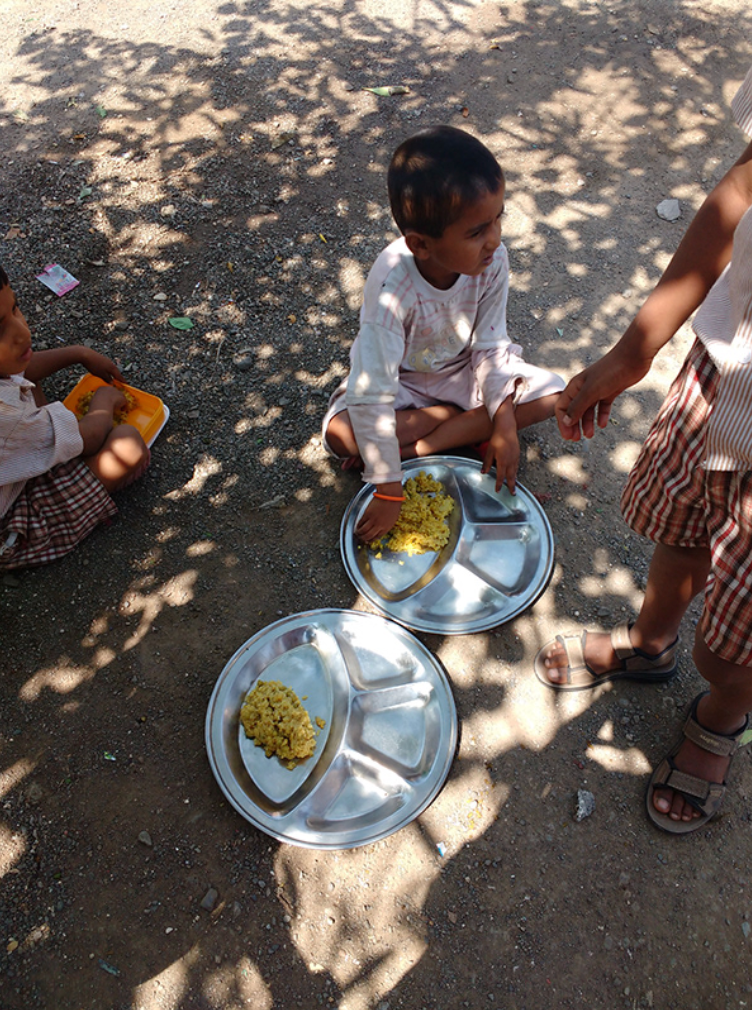
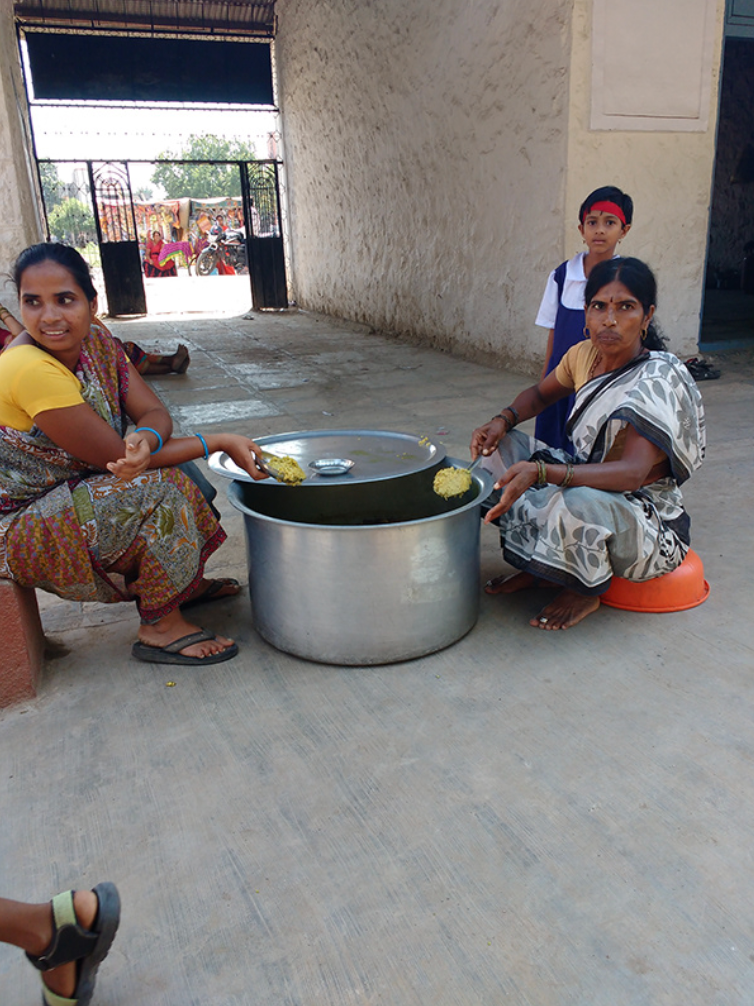
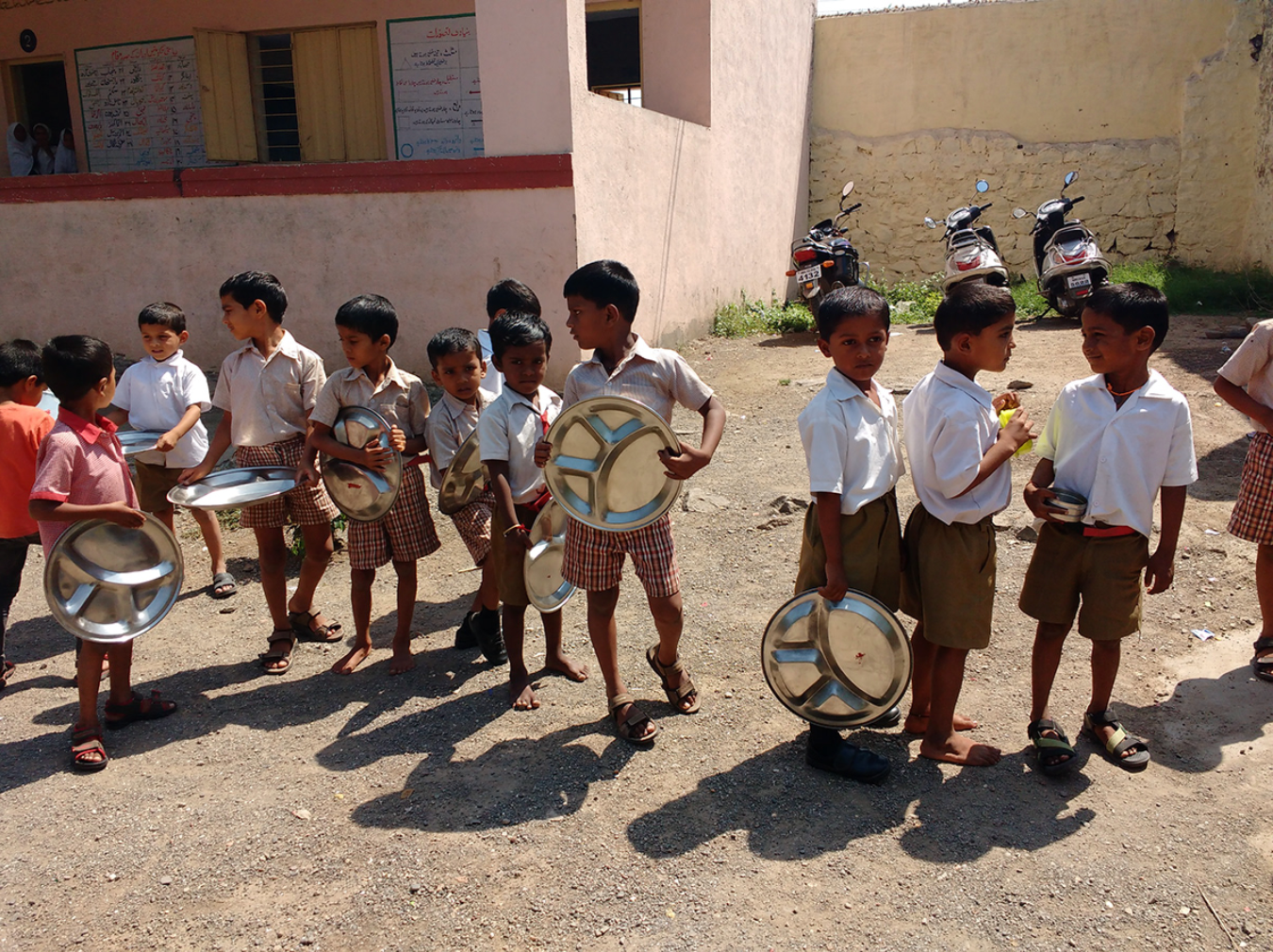
After speaking to rural health professionals and nursing home staff, we found out the three key factors to coping with Anaemia. To our surprise we realised how the government also works towards the same and has sanctioned the distribution of iron pills amongst the rural pregnant population.
Research synthesis
Barriers in Self Care // The methods to tackle anaemia are quite simple with dietary changes and supplement intake, but there are multiple nuances in this seemingly straightforward problem, from misconceptions to apathy to cultural barriers.
- Women have misconceptions about the amount of food to be eaten during pregnancy. “If I eat too much, it might put pressure on the baby.”
- They are are resistive to change and the solutions need to blend into their routine lifestyles.
- Each of the women had different recipes they made of the same ingredients, when told about iron-rich foods, a testament to the multi-ethnic culture of India.
- Iron supplements are provided free of cost at the public health centres but women often forget to consume the tablets everyday as they don’t see its importance.
Opportunity
How might we inform rural women on good practices to combat anaemia, stimulate behaviour change and then sustain those changes?
Intervention
The fight versus Anaemia by creating empowerment through changes within the system and at an individual level.
A. Eating for two - a plate
Derived from the womb, this plate is a simple reminder for the mother to increase her intake of iron rich food during pregnancy, for herself and for the baby.
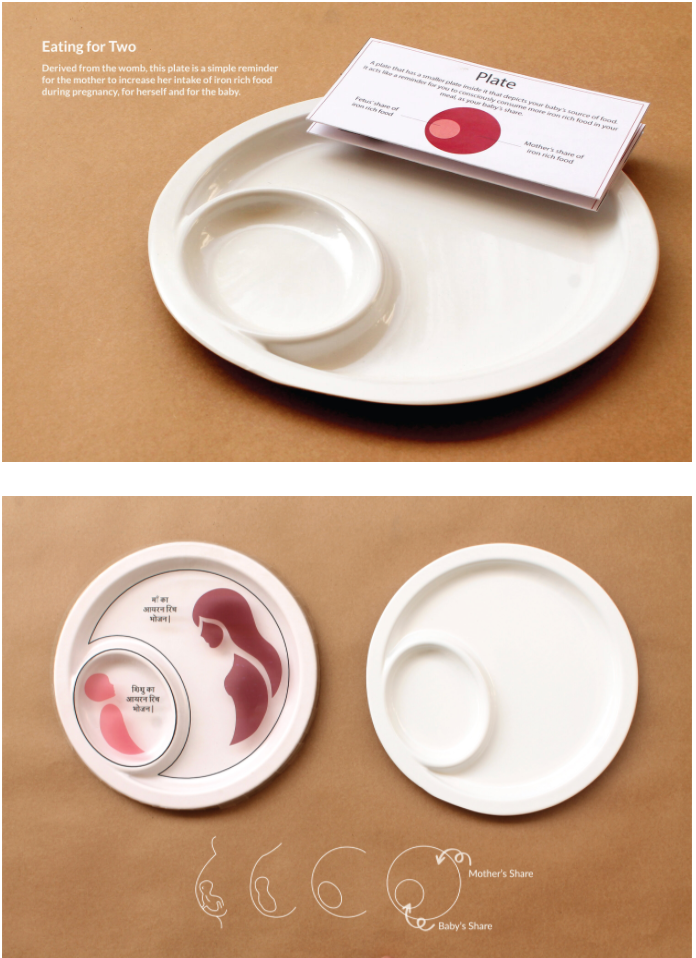
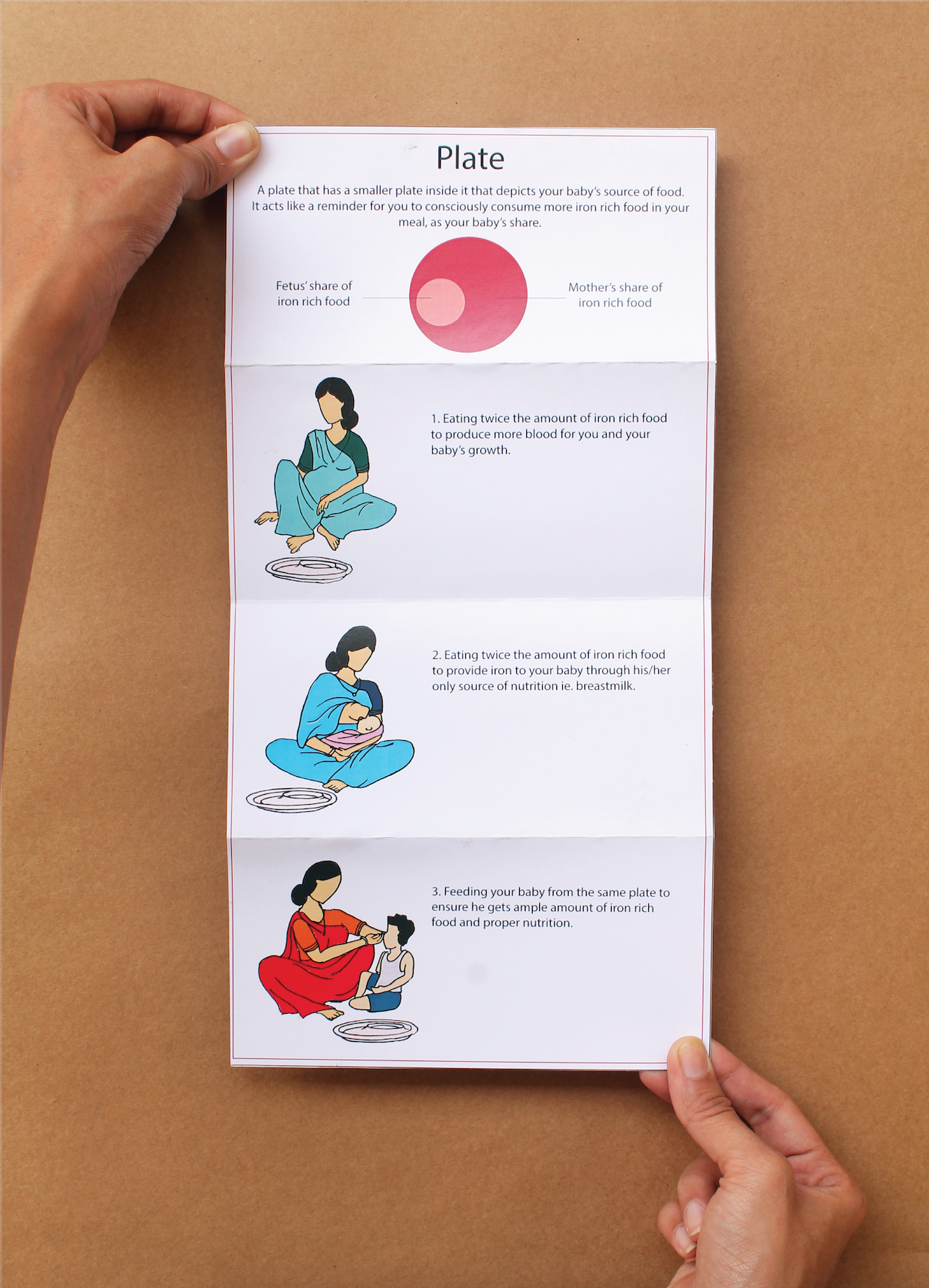
B. One tablet for one bindi, every morning!
Iron supplements packaging that comes with bindis, urging them to take a tablet every time they put a bindi. Hence acting as a reminder in their daily ritual, an integral part of their lives.
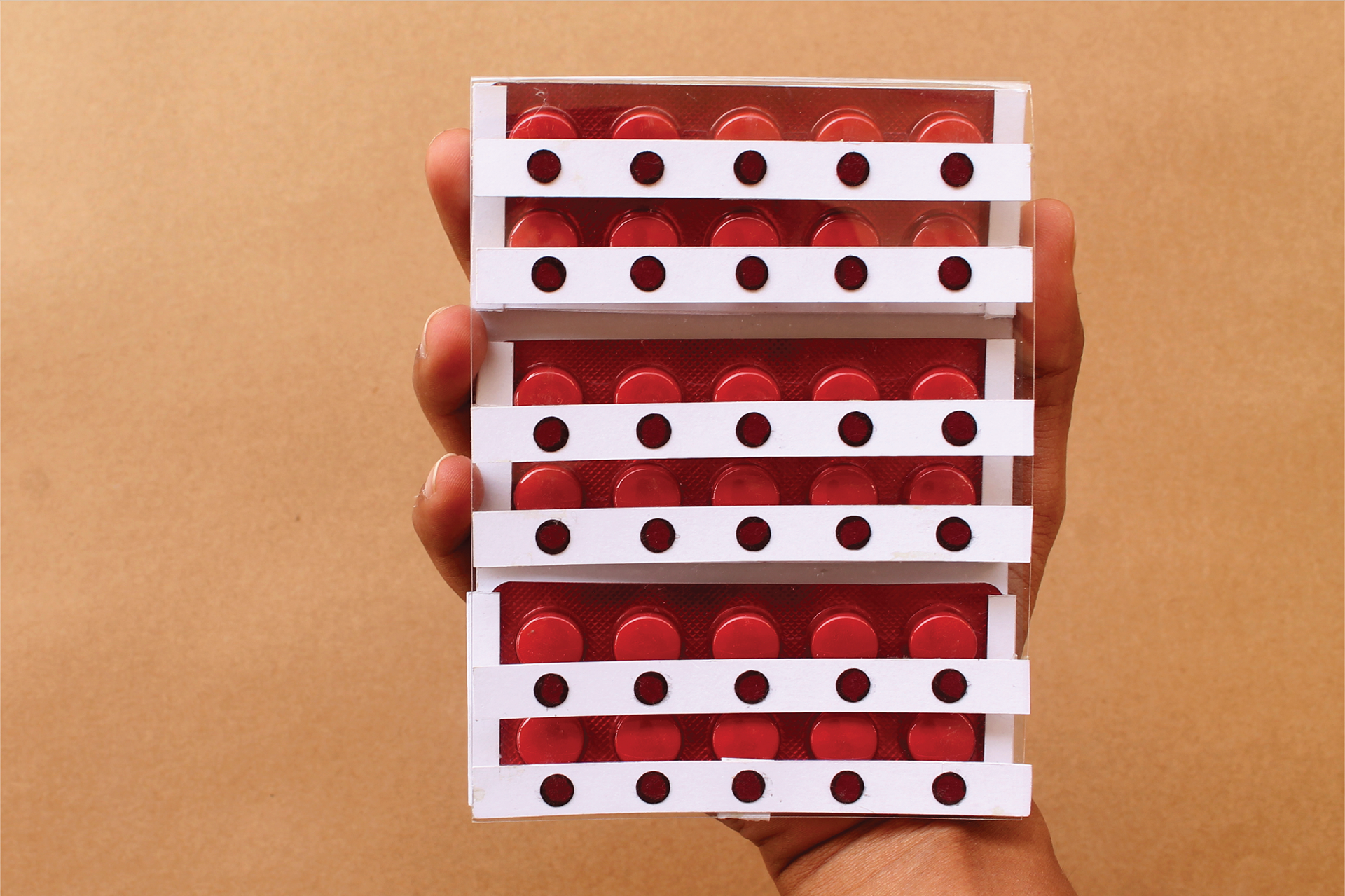
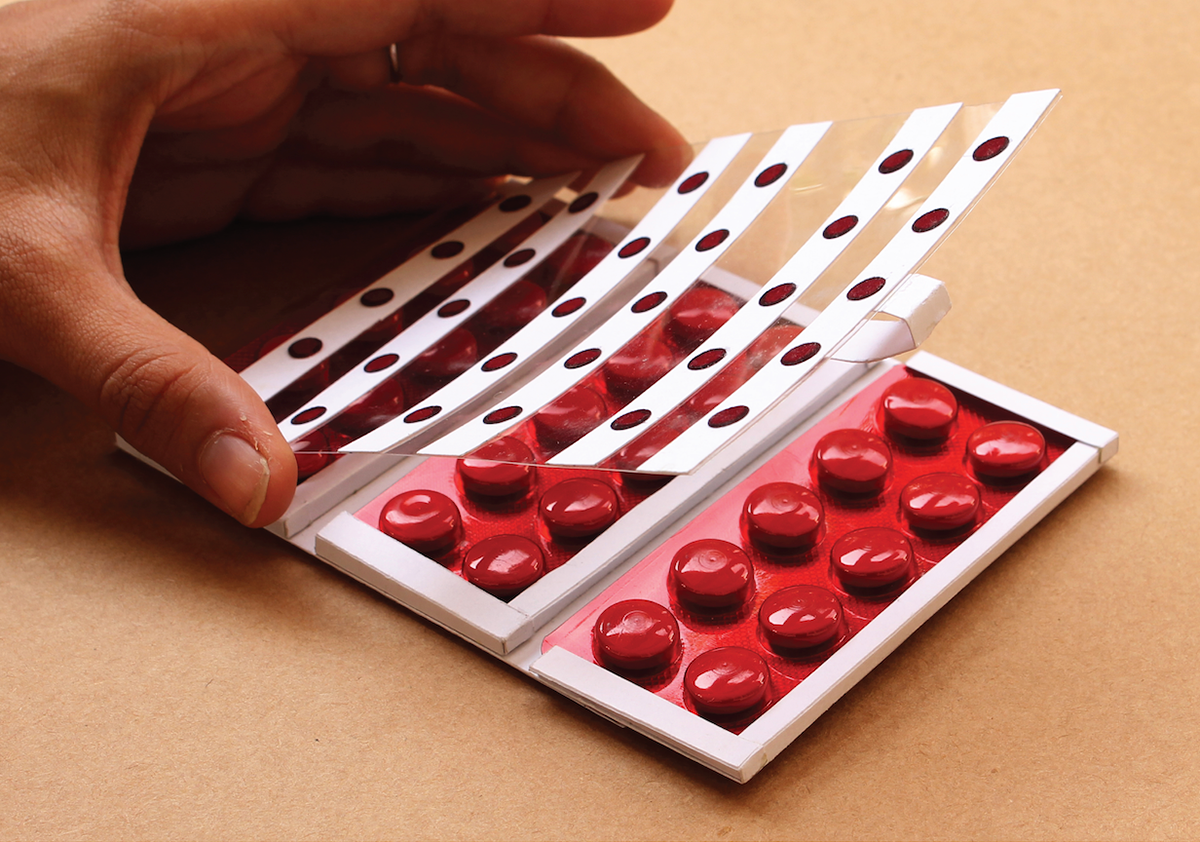
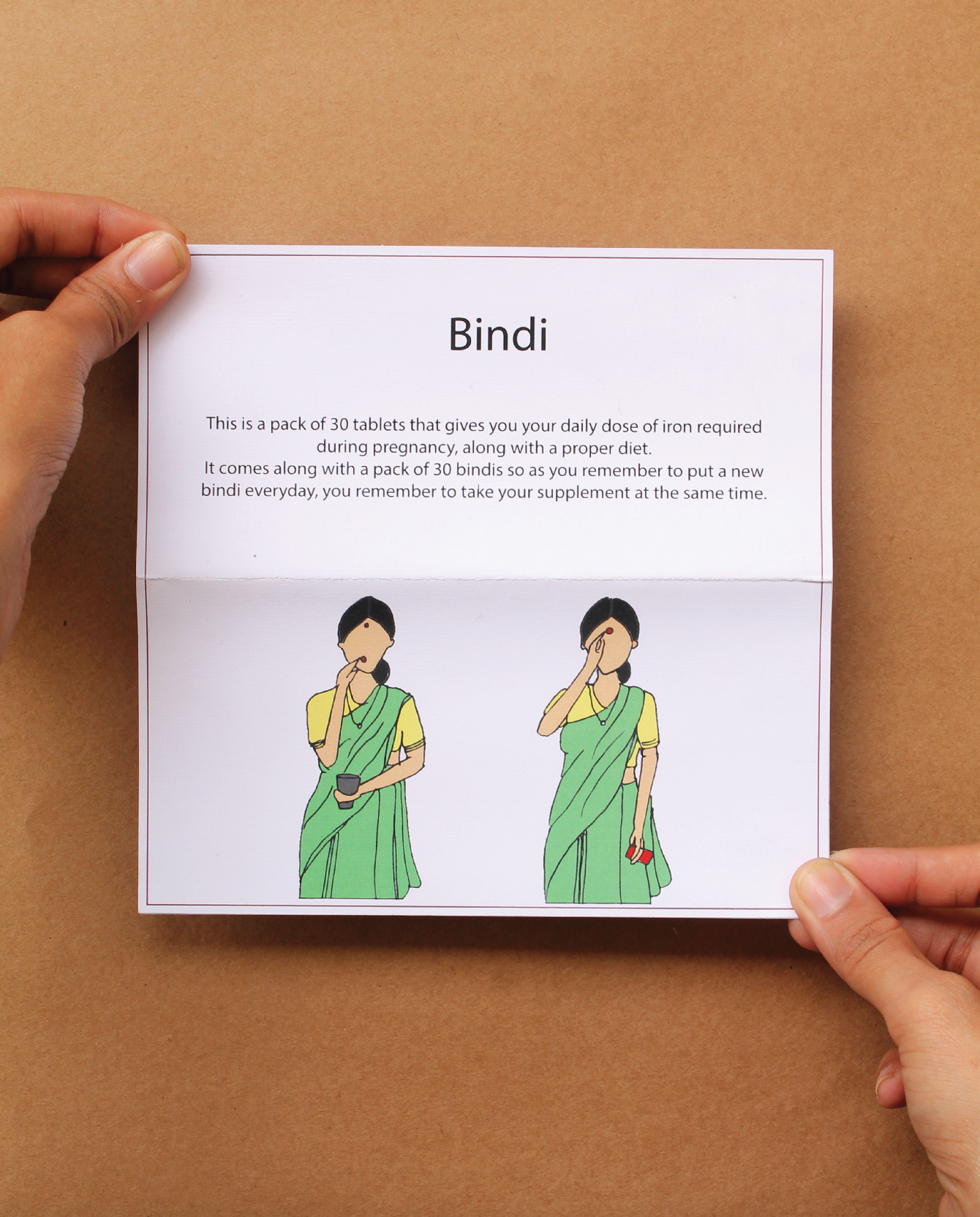
C. Eating right - a guidebook
A spiral bound booklet to be hung, acting as a constant visual reminder about the kinds of iron rich food to be consumed. It is colour coded in descending order of iron content.

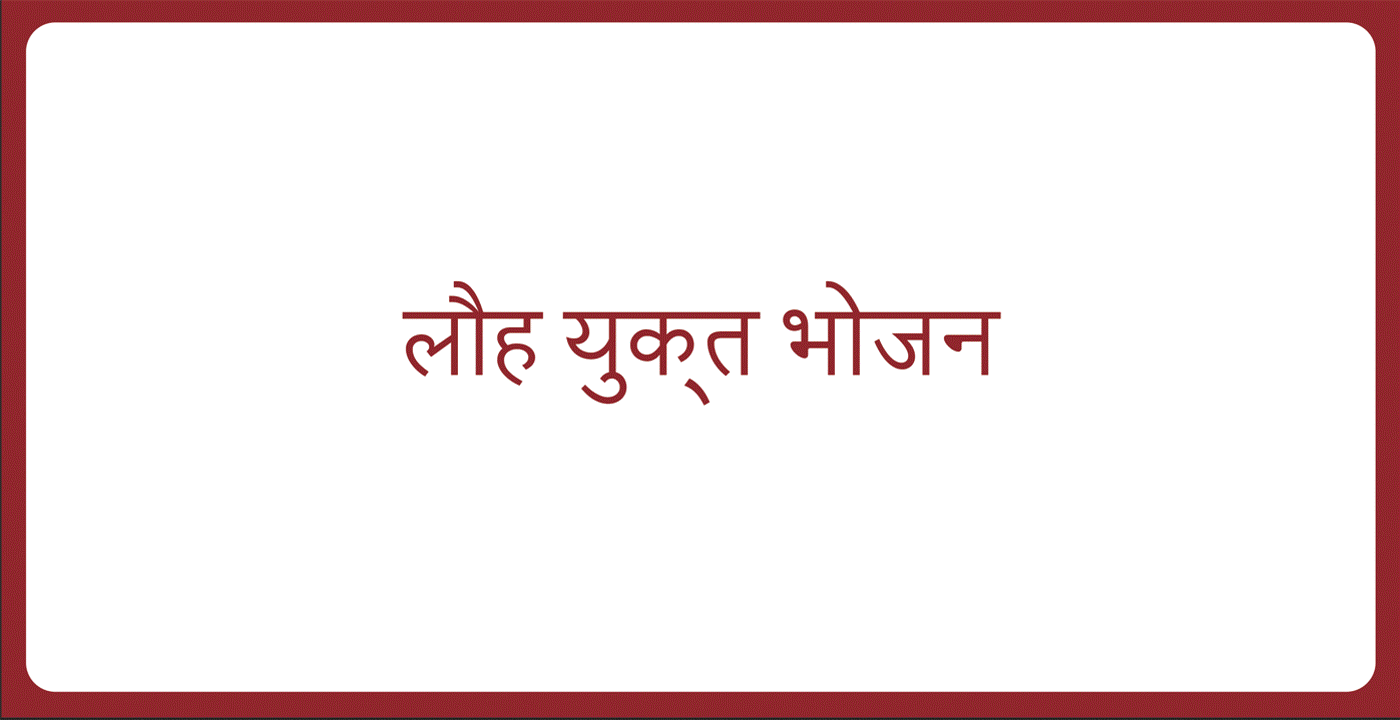
D. Packaging for the kit - a nudge
The packaging is a reusable vegetable bag. The red pocket is aimed at reminding and encouraging mothers to buy iron rich food whenever they go grocery shopping.








